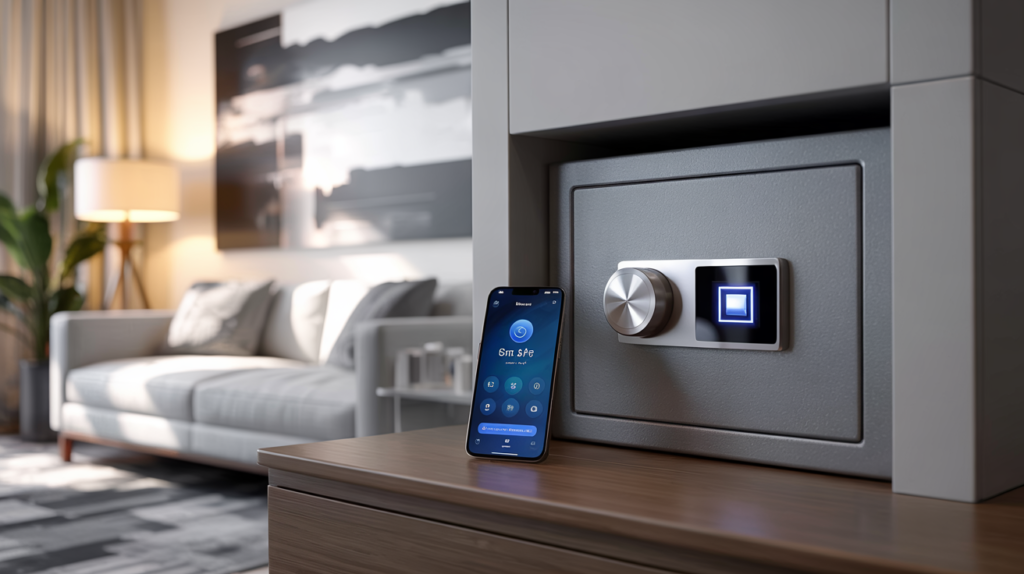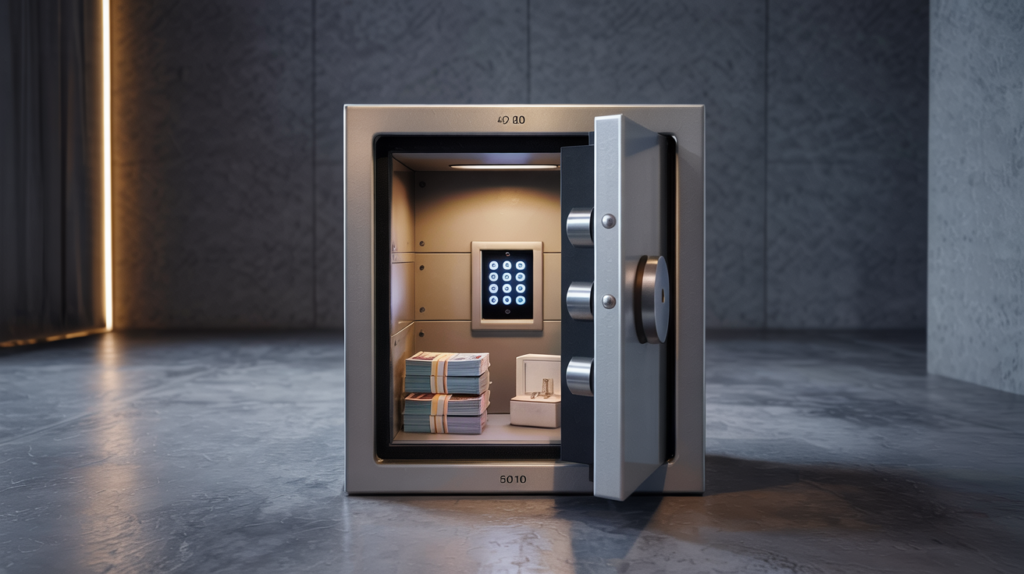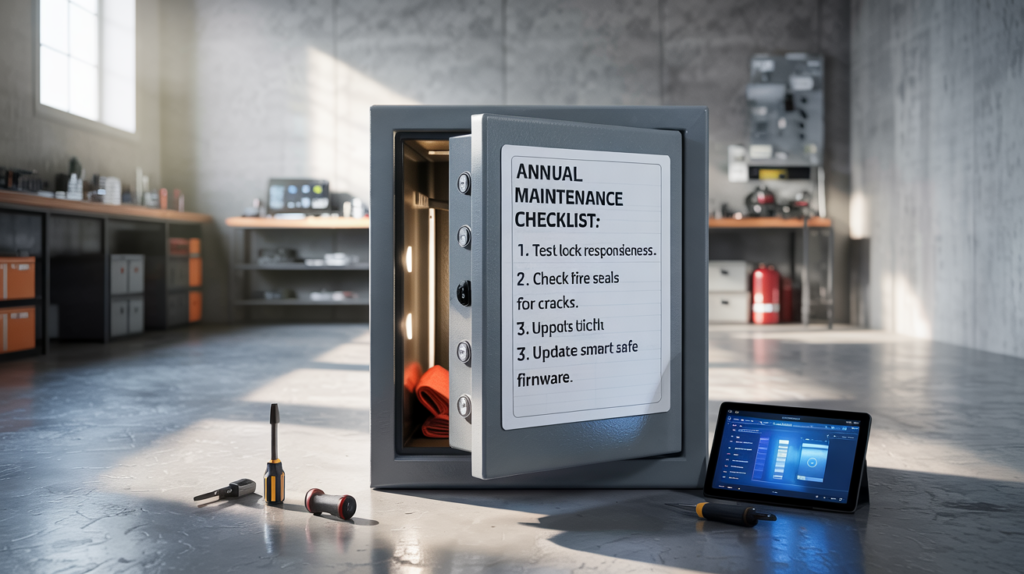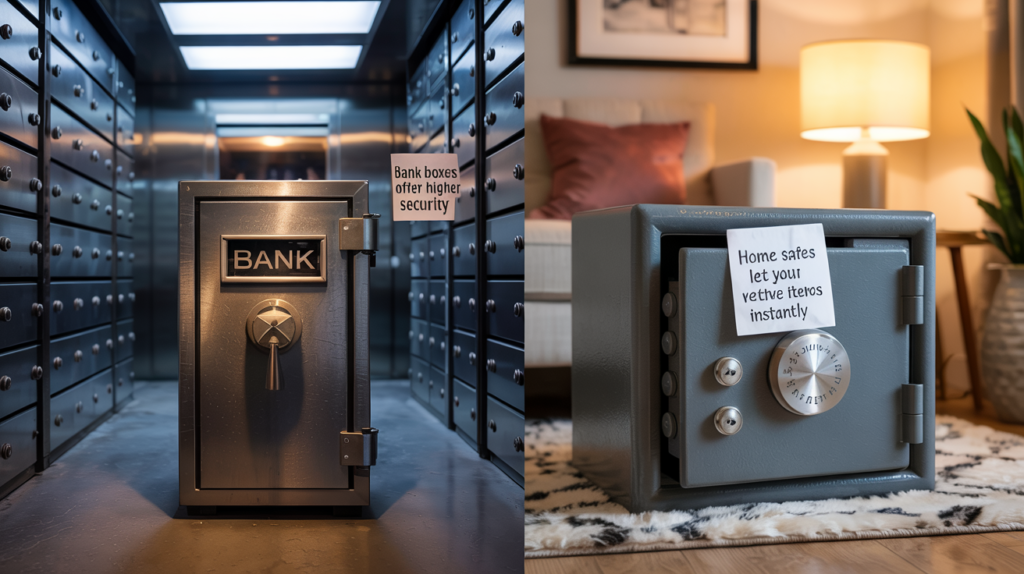Home Safe Box: Secure Your Valuables Smartly
In an era where home security is non-negotiable, a home safe box offers a reliable way to protect valuables from theft, fire, and water damage. This guide dives into why these safes are essential, how to choose the right one, and innovative features that make them indispensable for modern households.
1. What Is a Home Safe Box?
A home safe box is a fortified container designed to safeguard items like cash, jewelry, documents, and firearms. Unlike basic lockboxes, these units combine robust materials (steel, composite alloys) with advanced locking mechanisms. But here’s the kicker: Modern models also offer fireproofing, waterproofing, and smart connectivity.
Common types include:
- Fireproof Safes: Withstand temperatures up to 1,700°F for 30–120 minutes.
- Wall-Mounted Safes: Discreetly embedded in walls behind paintings or mirrors.
- Smart Safes: Biometric locks and app alerts for unauthorized access.

| Home Safe Types | Best For | Price Range |
|---|---|---|
| Fireproof | Documents, Hard Drives | 150–150–1,200 |
| Wall-Mounted | Jewelry, Cash | 200–200–800 |
| Smart Safe | Tech Gadgets, Firearms | 400–400–2,000 |
2. Why Should Every Home Have a Safe Box?
Burglars target homes every 26 seconds in the U.S., making secure storage critical. What’s the real story? Even if thieves break in, a well-hidden safe can protect irreplaceable items like family heirlooms or wills.
Beyond theft, fire and water pose risks. For example, a fireproof safe can preserve passports and deeds during a house fire. Ready for the good part? Insurance companies often offer discounts for homes with certified safes.
Case Study: A Texas family avoided $50,000 in losses during a wildfire by storing documents in a 1-hour fireproof safe.
3. How Does a Home Safe Box Work?
Home safes rely on layered security. This is where it gets interesting: High-end models use biometric scanners (fingerprint or retinal) and anti-drill plates to deter break-ins. Fireproof safes utilize intumescent seals that expand under heat, blocking smoke and flames.

| Security Feature | Function |
|---|---|
| Biometric Lock | Grants access via fingerprint |
| Anti-Pry Bars | Reinforces door against leverage attacks |
| Heat-Activated Seal | Expands to block fire/ smoke |
4. What Are the Best Types of Home Safe Boxes?
Choose based on your primary risks:
- Fireproof Safes: Ideal for paper documents (UL Class 125 rating).
- Waterproof Safes: Protect electronics during floods (IP68 rating).
- Gun Safes: Quick-access biometrics for emergency use.
But wait—there’s more: Hybrid models like the Honeywell 2104 offer fire and water resistance under $500.
| Top Brands | Specialty | Price |
|---|---|---|
| SentrySafe | Budget Fireproofing | 100–100–400 |
| Liberty Safe | Gun Storage | 600–600–3,000 |
| Vaultek | Smart Features | 300–300–1,500 |
5. How to Choose the Right Home Safe Box?
Start by assessing what you’ll store. Pro tip: Measure the largest item (e.g., a rifle) and add 25% for future needs. Prioritize UL or ETL certifications for fire/water resistance.
Budget breakdown:
- Under $200: Basic lockboxes for cash or small items.
- 200–200–800: Fireproof models with digital locks.
- $800+: Commercial-grade safes with smart tech.
| Checklist | Priority |
|---|---|
| Size/Capacity | Fit all valuables |
| Certification | UL, ETL, or JIS |
| Lock Type | Biometric > Keypad > Key |
6. Where Should You Install a Home Safe Box?
Avoid predictable spots like bedrooms. Think about it: Install floor safes in garage corners or wall units behind shelves. Use concrete anchors for floor models to prevent removal.
DIY installation works for sub-100 lb safes, but hire professionals for heavier units.
| Installation Tips | Do’s | Don’ts |
|---|---|---|
| Location | Basement, Closet | Master Bedroom |
| Anchoring | Bolt to floor/wall | Leave unsecured |
7. How to Maintain a Home Safe Box?
Dust buildup can jam locks. Clean exteriors monthly with microfiber cloths. Here’s a pro move: For electronic locks, use lithium batteries (last 2x longer than alkaline).
Annual maintenance checklist:
- Test lock responsiveness.
- Check fire seals for cracks.
- Update smart safe firmware.

8. Can a Home Safe Box Withstand Fire or Floods?
Fire resistance depends on ratings. A 30-minute safe protects during small fires, while 2-hour models suit wildfire zones. But beware: No safe is fully fireproof—temperatures exceeding 1,700°F will compromise most units.
Waterproof safes with IP68 ratings survive 48-hour submersion. Pair with silica gel packs to control humidity.
| Disaster Protection | Rating |
|---|---|
| Fireproof | 30 mins–2 hours |
| Waterproof | IP68 (3+ feet submersion) |
9. Are Home Safe Boxes Legal?
Owning a safe is legal everywhere, but storing firearms or cash may have local rules. Key reminder: California requires gun safes to meet DOJ standards. Always declare high-value items to insurers.
10. How Do Home Safes Compare to Bank Safety Deposit Boxes?
Bank boxes offer higher security but lack 24/7 access. The trade-off: Home safes let you retrieve items instantly but require self-managed security.

| Factor | Home Safe | Bank Box |
|---|---|---|
| Accessibility | 24/7 | Business Hours |
| Cost | One-time purchase | Annual fees (50–50–300) |
11. What Are the Biggest Mistakes to Avoid?
Using default codes like “0000” invites hackers. Act now: Set unique PINs and avoid sharing them. Never place safes in humid areas—moisture can damage electronics.
12. How to Test Your Home Safe Box’s Security?
Conduct a break-in drill. Time how long it takes to crack the safe. Upgrade if it’s breached in under 5 minutes. Test fire resistance by placing a thermometer inside during a controlled burn.
13. What Are the Latest Innovations in Home Safes?
AI-powered safes now recognize unauthorized users via facial recognition. Future alert: Solar-powered units like the Yale Solar Safe reduce dependency on electricity.
14. How Much Does a High-Quality Home Safe Box Cost?
Expect to spend $500+ for durable fireproof models. For example:
| Model | Price | Features |
|---|---|---|
| SentrySafe SFW123DSB | $450 | 1-hour fireproof, waterproof |
| Liberty Franklin 30 | $1,999 | 90-minute fireproof, biometric |
15. Can You Build a DIY Home Safe Box?
DIY options exist but lack certifications. Use steel plates and combination locks for basic security. Proceed with caution: Insurers may not cover DIY safe losses.
FAQ Section
Q1: What is a home safe box?
A secure container designed to protect valuables from theft, fire, or water damage.
Q2: How does a fireproof safe protect documents?
Heat-resistant materials and seals keep internal temperatures below 350°F for up to 2 hours.
Q3: Can I store digital devices in a home safe?
Yes, but use a waterproof model with humidity control.
Q4: Are home safes pet-proof?
Most are, but avoid placing them where pets might trigger motion sensors.
Q5: Do home safes require professional installation?
Only heavy models (>300 lbs) need experts; others can be DIY-installed.




